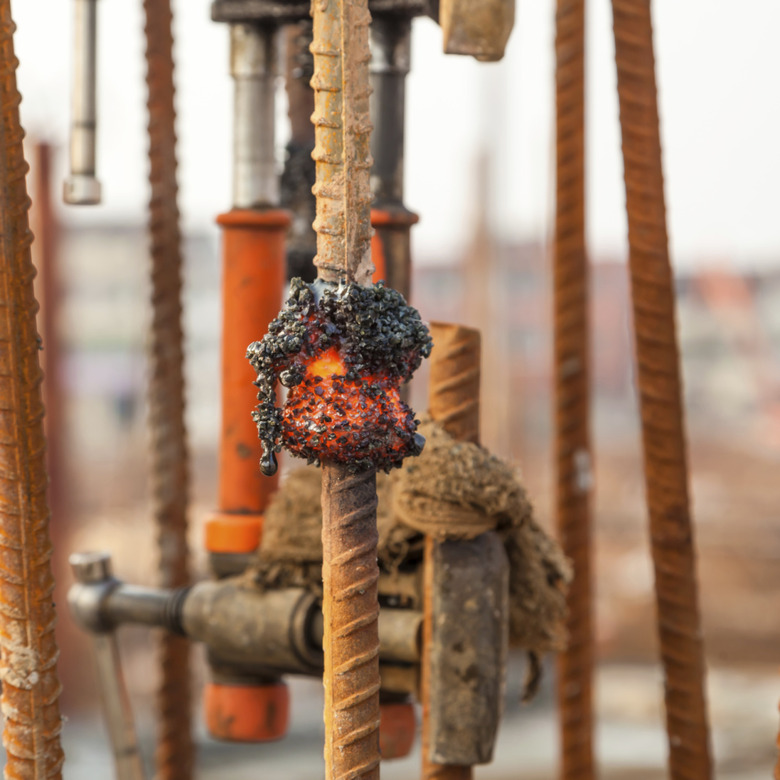Examples Of Single Replacement Reactions
Chemical reactions change substances into new materials with different chemical compositions than the original compounds or elements. In the type of reaction known as single replacement, or single displacement, one element replaces another element in a compound. The element that replaces another in a compound is generally more reactive than the element it supplants. In these reactions, one element always reacts with a compound, and you end up with an element and compound as products.
Metals in Aqueous Solution
Metals in Aqueous Solution
If you place a copper wire in the aqueous solution of silver nitrate, you will end up with silver metal crystals and copper nitrate solution. In this reaction, the copper element replaces the silver in the nitrate compound. Similarly, if you put zinc in an aqueous solution of copper nitrate, zinc replaces the copper in a single replacement reaction. The products of this chemical reaction are copper and zinc nitrate.
Metals in Acid
Metals in Acid
Some metals and acids will engage in single replacement reactions. Zinc, when dipped in hydrochloric acid, will displace the hydrogen in the hydrochloric acid and form zinc chloride, leaving hydrogen atoms as the other product of the reaction. Metals in general will displace hydrogen from an acid, according to the HyperPhysics Department of Georgia State University. Other examples include the reaction between magnesium and hydrochloric acid, which forms magnesium chloride and hydrogen, and potassium and sulfuric acid, which forms potassium sulfate and hydrogen gas.
Thermite Reaction
Thermite Reaction
The thermite reaction between iron oxide and aluminum is a single replacement reaction that is exothermic, meaning it gives off heat. The extreme heat released from this reaction is sufficient to melt the iron product. In the reaction, aluminum replaces iron, so the products are iron and aluminum oxide. This reaction is also an oxidation-reduction reaction, or redox reaction, in which aluminum is oxidized to form aluminum oxide, as the iron oxide is reduced to iron molecules.
Nonmetal Reactions
Nonmetal Reactions
While many single replacement reactions involve metals replacing each other, replacements can occur between nonmetals. For example, the halogen chlorine will displace the bromine in a sodium bromide compound because halogen is more reactive than bromine. The resulting products are sodium chloride and bromine. Similarly, bromine replaces iodine in a reaction between bromine and potassium iodide or calcium iodide. These reactions occur because bromine is more reactive than iodine.
Cite This Article
MLA
Batema, Cara. "Examples Of Single Replacement Reactions" sciencing.com, https://www.sciencing.com/examples-single-replacement-reaction-4813879/. 24 April 2017.
APA
Batema, Cara. (2017, April 24). Examples Of Single Replacement Reactions. sciencing.com. Retrieved from https://www.sciencing.com/examples-single-replacement-reaction-4813879/
Chicago
Batema, Cara. Examples Of Single Replacement Reactions last modified August 30, 2022. https://www.sciencing.com/examples-single-replacement-reaction-4813879/
